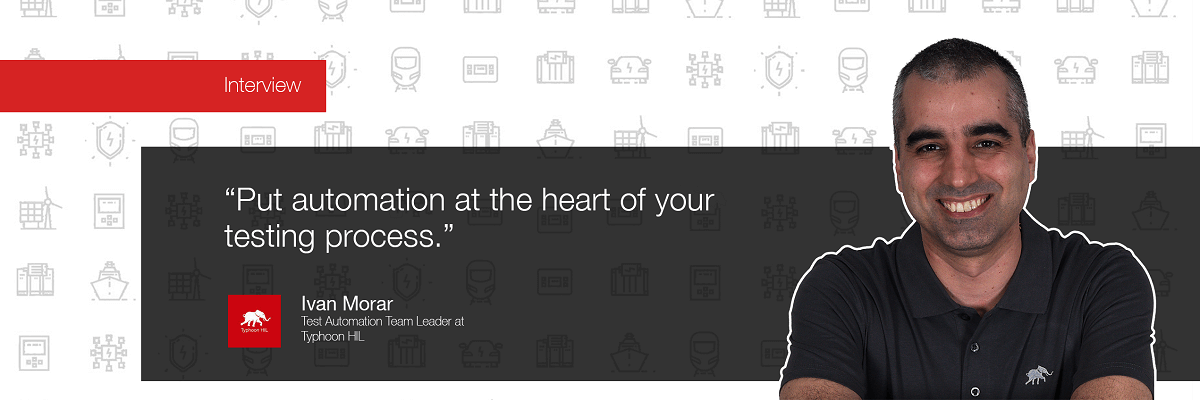Meet Ivan. Ivan is the Test Automation Team Leader at Typhoon HIL. He answered 8 questions to show us the most interesting parts of being a test automation engineer, starting with the most important one: how can you become a Hardware-In-the-Loop (HIL) test engineer?
Test automation involves creating test cases, normally by coding. There are tools for visual test automation, but underneath it there is still some code generation. This is because the point of testing is to validate some application or some device, and their behaviors are described with code. So understanding any programming language, and in our case Python in particular, will help greatly in making test cases.
What does a HIL test automation engineer do?
The main goal of a HIL test automation engineer is to automate the testing process and to make sure that features work according to their specifications. In our case, we use Hardware in the Loop technology combined with our testing tools to create and execute automated Python tests, and print out readable reports which are understandable without any coding experience.
Why is Test automation important?
In any industry that relies on hardware-in-the-loop testing, one of the best ways that you can add value and improve your productivity is by automating your HIL tests. Executing manual tests in order to validate behavior of the software or the device under test is a repetitive and tedious process for the test engineer. Luckily, in most cases, these testing efforts can be automated and when validating new features or performing regression testing. This greatly increases test coverage and removes potential human error from the picture.
What is the most interesting part of your work?
Constantly learning about new technologies which we can use in-house is great. On top of that, working with big companies that are leaders in the areas of renewable power generation, power distribution, and drivetrains and helping them to validate their applications feels really impactful.
What do you see as the most challenging aspect of this job? What do the day-to-day responsibilities of the HIL test engineer look like?
Working with customers can be really interesting and also challenging. Sometimes understanding what the customer wants is not an easy task. Good communication skills help!
Thinking back to people you’ve seen do this work previously, what differentiated the good ones from the exceptional ones?
A knowledge of power electronics and/or electrical machines with a desire to always learn more will greatly help you excel. That doesn’t mean that somebody with good programming skills and an engineering degree won’t rise and shine, though. If you are persistent and willing to learn, you can make a difference! If you are interested in more general power electronics courses I highly recommend to you go through the Converter Circuit Fundamentals – Courses developed by the Faculty of Technical Sciences, which covers the fundamental knowledge you’ll need for starting or accelerating your career as an electrical engineer.
What makes a HIL test engineer in your team different from test engineers in other companies?
Our goal is to automate the whole testing process and to put manual testing into past. This is not an easy task but we like challenges.
Where can I find more information regarding what HIL Testing is about and how to write automated tests?
The Test Automation Course, available here on HIL Academy, could be a great choice for you if you want to get familiar with this topic and to understand more about what this job is actually about. This course lets you experience the pytest framework’s “code less, achieve more” concept within the pytest framework, so you can learn to write your first automated test with no previous coding experience required! Furthermore, this course is built by colleagues from my team, so it should give you a clear picture of what our day-to-day job looks like.





Responses